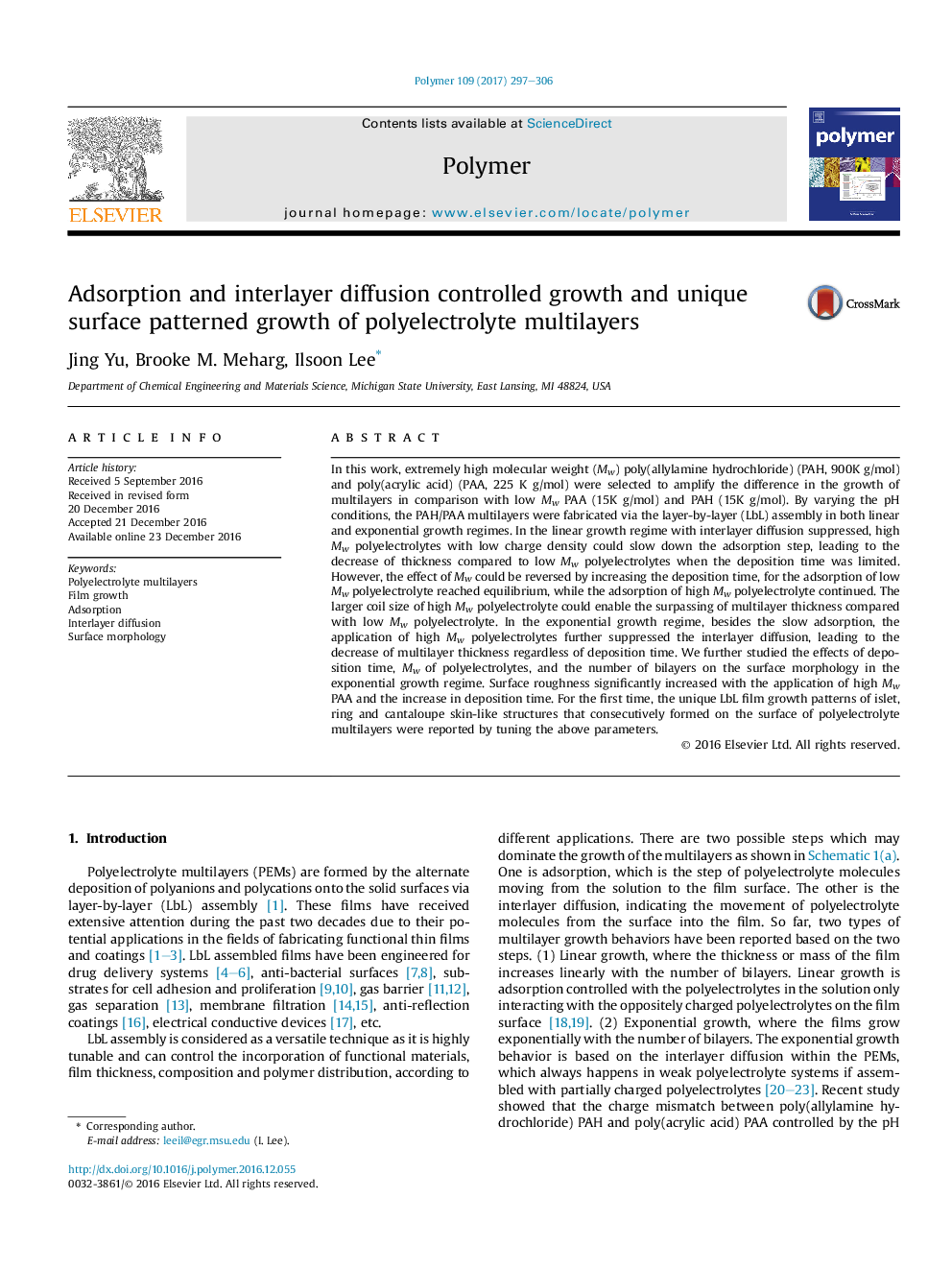| کد مقاله | کد نشریه | سال انتشار | مقاله انگلیسی | نسخه تمام متن |
|---|---|---|---|---|
| 5178561 | 1502497 | 2017 | 10 صفحه PDF | دانلود رایگان |

• PAH and PAA with extremely different Mws were applied to fabricate PEMs.
• Growth behavior of PEMs was studied in both linear and exponential growth regime.
• Mw effect on film growth is dependent on the deposition time and charge density.
• Unique surface topographies were obtained ranging from nano- to micro-scale.
In this work, extremely high molecular weight (Mw) poly(allylamine hydrochloride) (PAH, 900K g/mol) and poly(acrylic acid) (PAA, 225 K g/mol) were selected to amplify the difference in the growth of multilayers in comparison with low Mw PAA (15K g/mol) and PAH (15K g/mol). By varying the pH conditions, the PAH/PAA multilayers were fabricated via the layer-by-layer (LbL) assembly in both linear and exponential growth regimes. In the linear growth regime with interlayer diffusion suppressed, high Mw polyelectrolytes with low charge density could slow down the adsorption step, leading to the decrease of thickness compared to low Mw polyelectrolytes when the deposition time was limited. However, the effect of Mw could be reversed by increasing the deposition time, for the adsorption of low Mw polyelectrolyte reached equilibrium, while the adsorption of high Mw polyelectrolyte continued. The larger coil size of high Mw polyelectrolyte could enable the surpassing of multilayer thickness compared with low Mw polyelectrolyte. In the exponential growth regime, besides the slow adsorption, the application of high Mw polyelectrolytes further suppressed the interlayer diffusion, leading to the decrease of multilayer thickness regardless of deposition time. We further studied the effects of deposition time, Mw of polyelectrolytes, and the number of bilayers on the surface morphology in the exponential growth regime. Surface roughness significantly increased with the application of high Mw PAA and the increase in deposition time. For the first time, the unique LbL film growth patterns of islet, ring and cantaloupe skin-like structures that consecutively formed on the surface of polyelectrolyte multilayers were reported by tuning the above parameters.
Figure optionsDownload high-quality image (358 K)Download as PowerPoint slide
Journal: Polymer - Volume 109, 27 January 2017, Pages 297–306